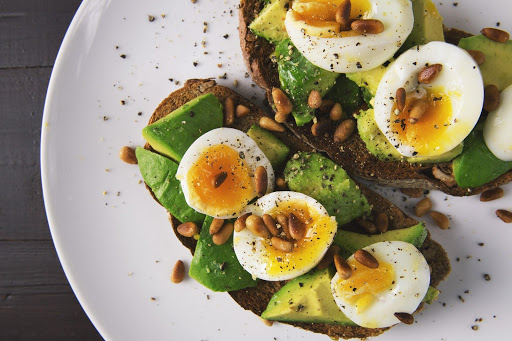

WONDERFUL DIABETIC DIET EVERYONE SHOULD FOLLOW

Diabetes patients can manage their condition effectively by consuming certain agreeable foods while restricting others. They need to ensure that their diet is rich in fruits, vegetables, and proteins. By eating a balanced diet, they can enhance well-being, maintain health, and prevent needless complications. Moolchand Medcity hospital’s diabetologist, Dr. Sanjiv Bhambani recommends, “A diabetes diet should be high on fiber, must contain milk without cream, buttermilk, fresh seasonal fruits, green vegetables, etc.” You need to eat these foods in moderation to obtain benefits.
1. Diabetes Diet
Diabetes patients should know that both starchy and sugary carbs can increase blood sugar levels, therefore they need to take them in proper portions and follow a balanced eating plan. Further, they need to track the total amount of carbs in their meals. Carbohydrate needs differ based on an individual’s activity levels as well as medicines like insulin. Dietitians suggest that people should include only a quarter plate of carbs in a single meal.
The American Diabetes Association (ADA) recommends the following diet for persons with diabetes:
a. Include fruits, vegetables, and lean protein
b. Eliminate trans fats
c. Select food items with minimal added sugar
Scott Soleimanpour, M.D., advises, “Have a balanced diet, utilize exercise to make insulin work effectively for you, and eat in such a way that you’re not having high peaks and low valleys in your sugar levels.” We recommend you include the following healthy foods in your daily diabetes diet:
2. Whole Grains
Whole grains are preferable to white grains because they contain more nutrients and higher fiber levels. The high fiber content helps individuals with diabetes because it slows down digestion. The body absorbs nutrients more leisurely which helps it to maintain stable sugar levels.
Further, whole grains and whole wheat have a lower glycemic index (GI) value compared to rice and wheat bread. Therefore, they have less effect on blood sugar. Diabetes patients can include the following whole-grain foods in their diet: rye, bulgur, millet, quinoa, buckwheat, whole-grain pasta and bread, and brown rice. Replace white pasta or white bread with the above whole-grain choices.
3. Green Vegetables
Green leafy vegetables are loaded with essential nutrients, minerals, and vitamins, and have minimal effect on blood sugar. Leafy greens like kale and spinach are rich in calcium, fiber, protein, vitamin A, and potassium. Further, researchers indicate that leafy greens can help persons with diabetes as they contain enzymes that digest starch and are high in antioxidant properties. The following leafy greens are recommended: broccoli, bok choy, cabbage, kale, collard greens, and spinach.
You can include leafy green veggies in your diet in dinners, soups, side dishes, and salads. Fuse them with lean protein sources like tofu or chicken for a hearty and healthy meal.
3. Beans
Beans are great for persons with diabetes as they are packed with protein, can satiate the appetite, and help patients to decrease their carb consumption. Beans also score low on GI value and thus help to regulate blood sugar better than other starchy items. They are a complex carb which means the body takes a longer time to digest them which helps people to control their blood sugar. Beans can also help to regulate the body’s cholesterol and blood pressure levels aiding to weight loss.
The following beans pack vital nutrients such as magnesium, potassium, and iron: adzuki beans, navy beans, black beans, pinto beans, and kidney beans. You can include beans in a versatile manner in stew or chili, or with a salad with tortilla wraps. If you use canned beans, select an item without added salt.
4. Fatty Fish
This item is great for any diet as fatty fish host vital omega-3 fatty acids. It is essential for people to consume the needed amount of healthy fats to promote brain and heart health and maintain optimal body function. According to an ADA report, a diet rich in monounsaturated and polyunsaturated fats can help persons with diabetes to improve their blood lipids and blood sugar management.
The following types of fish are packed with both monounsaturated and polyunsaturated fats: trout, herring, albacore tuna, sardines, mackerel, and salmon. Plant-based sources of the above fatty acids are seaweed like spirulina and kelp. We advise you not to fry the fish as this increases trans and saturated fats. Rather, you can try grilled, roasted, or baked fish. Mix with vegetables for a tasty and nutritious meal.
Wrapping Up
To sum up, individuals with diabetes should ideally consume a diet rich in fruits, vegetables, and healthy proteins to manage their condition capably. They need to avoid sugary and starchy carbs as these raise blood sugar levels. We suggest you include whole grains, green leafy veggies, beans, and fatty fish in your wholesome diabetes diet. This way, you can consume tasty and nutrient-packed food items without feeling deprived. The key is to eat the selected foods in moderation to gain health benefits and avoid side effects.
Related blog: MANAGEMENT TIPS FOR TYPE 1 DIABETES














